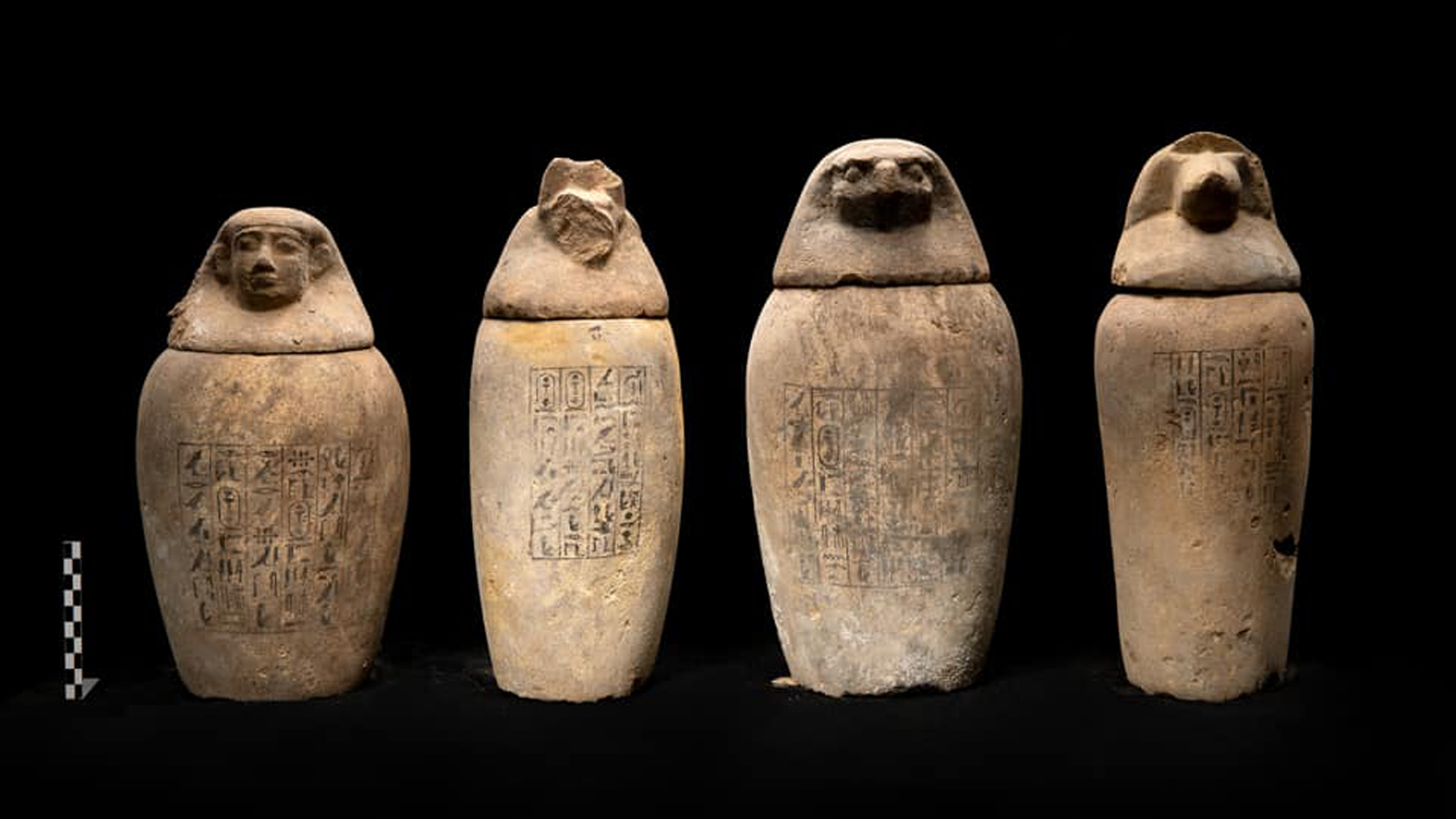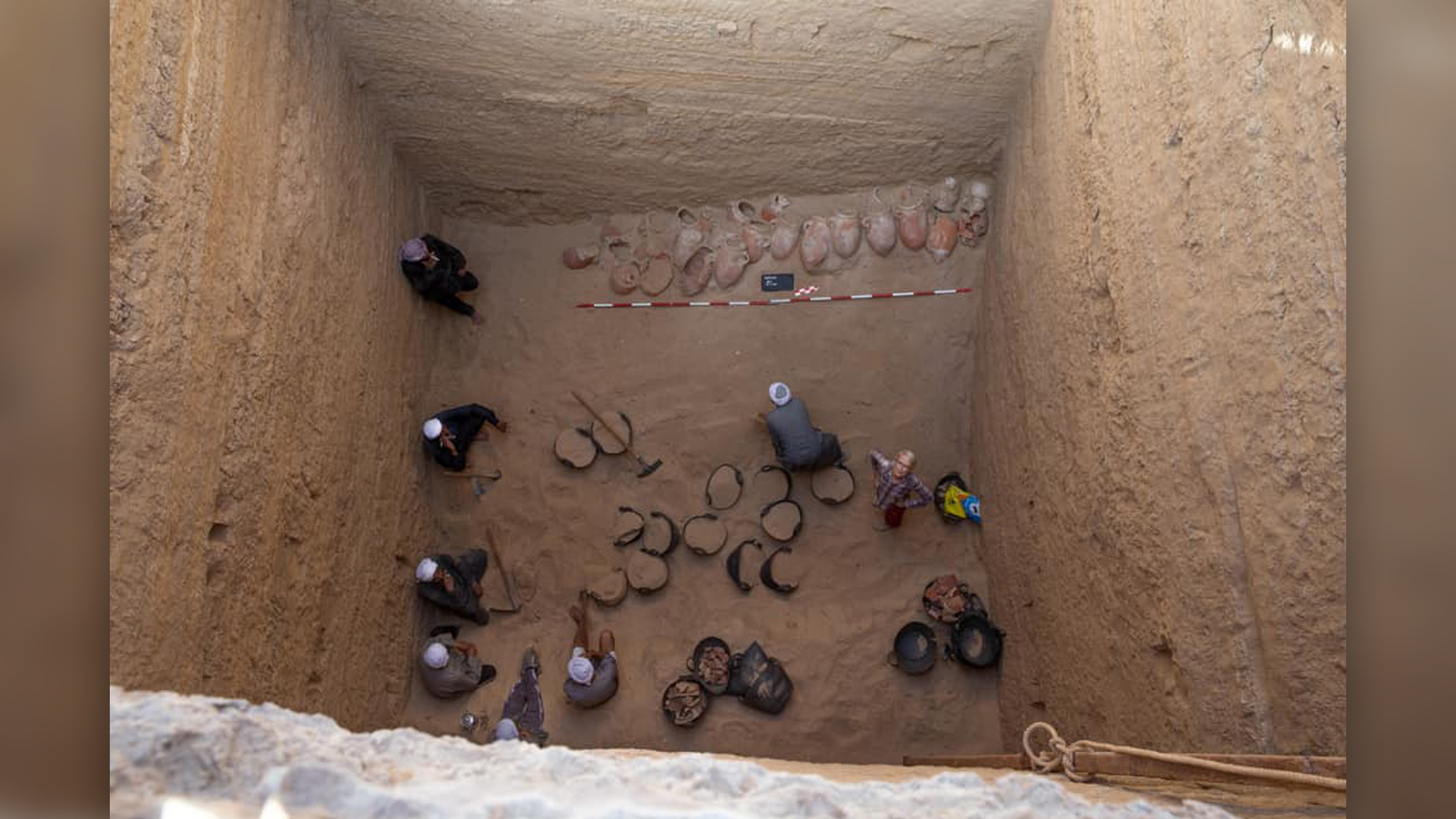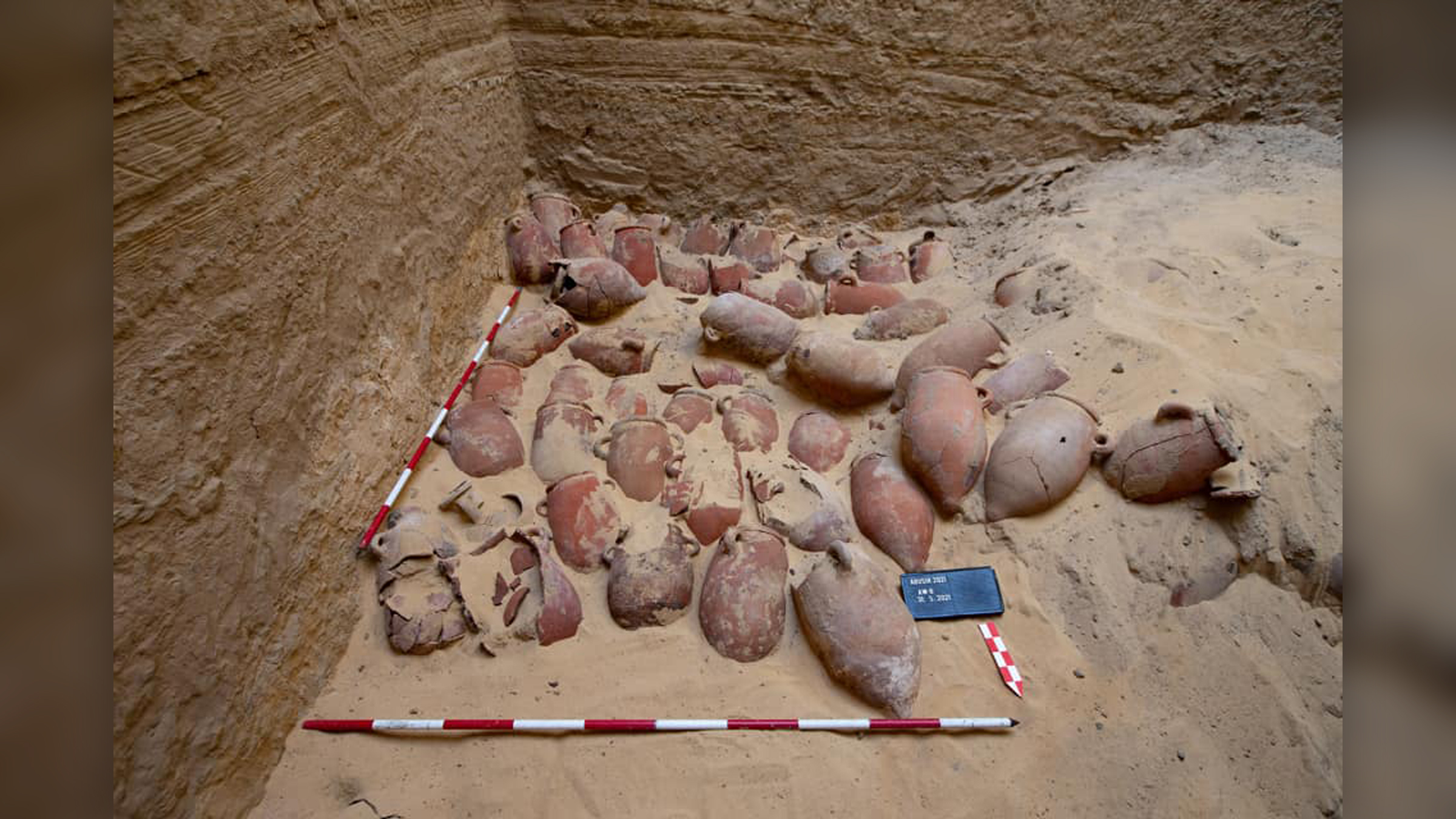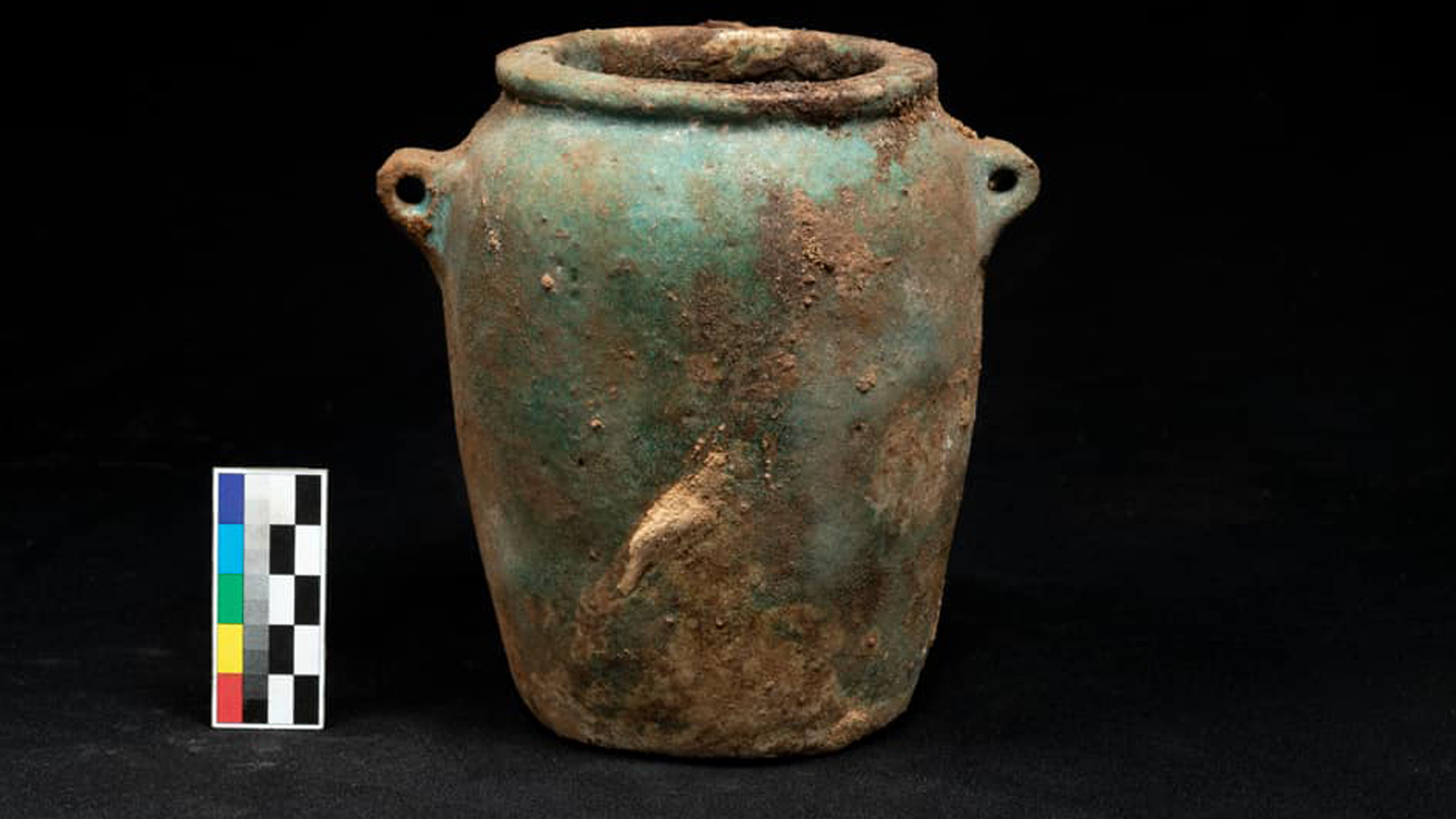Ancient Egyptian cache of mummification supplies unearthed
An excavation revealed canopic jars and pottery vessels.

A 2,500-year-old cache of equipment used to embalm ancient Egyptian mummies has been discovered in a cemetery at the site of Abusir in Egypt.
The discovery was made by a team of Egyptian and Czech Egyptologists close to the location of several ancient Egyptian tombs. Abusir, well known for its necropolis, is just 15 miles (25 kilometers) south of Cairo.
The cache includes about 370 large pottery storage vessels; a team of experts is now being assembled to determine what liquids or materials these jars held and how the ancient Egyptians may have used them in the mummification process, Miroslav Bárta, an Egyptology professor at Charles University in the Czech Republic and director of the Abusir mission, told Live Science.
Related: Fetus inside Egyptian mummy was 'pickled like an egg,' researchers say
A set of empty canopic jars — vessels that normally contained the organs of the deceased — were also found in the cache. The jars have writing on them that says they belong to a man named "Wahibre-mery-Neith," who is the son of "Lady Irturu." It's not clear who this man was or why his canopic jars were placed, empty, in this embalming cache.
"It is well possible that these were 'symbolic' canopic jars used during the mummification ritual to represent the [four] sons of Horus," Bárta said in an email. Horus is an Egyptian god often represented as a falcon, and his four sons were often depicted on canopic jars: Imsety with the liver; Hapy with the lungs; Duamutef with the stomach; and Qebhsenuef with the intestines, according to the British Museum in London.



Several sizable tombs had previously been found near the cache, and Bárta noted that it was common for embalming caches to be located near large tombs. Archaeologists also believe that another, undiscovered, tomb is nearby and plan to dig for it in April or May of this year, Bárta added.
Get the world’s most fascinating discoveries delivered straight to your inbox.
The cemetery where the cache was found dates to the sixth century B.C. — a time when Egypt was struggling to maintain its independence from the Persian Empire, which took control of the country in 525 B.C. Some tombs date to before the invasion while others date to afterward. Bárta said that the cemetery's builders wanted to maintain their Egyptian culture and designed the site to imitate the burial shaft inside the Step Pyramid of Djoser, which was built at Saqqara about 4,700 years ago. The step pyramid has a "monumental shaft with a stone built tomb at its bottom," Bárta said, and "this is precisely the scheme imitated by the shaft tombs in Abusir."
The Czech Institute of Egyptology and the Egyptian Ministry of Tourism & Antiquities released statements on Feb. 9, detailing the discovery. Research and excavations at the site are ongoing.
Originally published on Live Science.

Owen Jarus is a regular contributor to Live Science who writes about archaeology and humans' past. He has also written for The Independent (UK), The Canadian Press (CP) and The Associated Press (AP), among others. Owen has a bachelor of arts degree from the University of Toronto and a journalism degree from Ryerson University.


